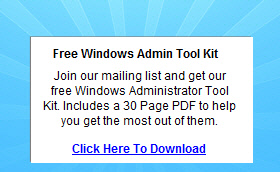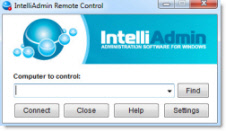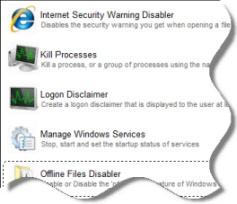Hi,
Just giving this thread a bit of a bump on this thread as I'm still trying to figure this one out..
I did resort to restoring from backup, to get my server working, but I'm encountering the issue on another 2008 R2 box, which is not good. So any suggestions you can think of would be appreciated. I think that this issue is more of a network protocol related
nature, rather than application issue.. I'd appreciate if anyone could suggest how to proceed further on this one..
Below are two snippets of wireshark captures, one is between the affected 2008 R2 host & a windows 2003 server, and the second one is between a working 2008 R2 host and the same 2003 server (used in the first example). In the test examples, I am simply
doing a start -> run; then typing \\2003servername\ and pressing enter. Below is the network traffic between the two hosts, after I hit return;
TEST#1 - Affected server (192.168.125.33), target remote server (192.168.125.6) - Affected server is 2008 R2, remote server is 2003 R2 Enterrpise 64-bit SP2
465 6.020857 192.168.125.33 192.168.125.6 TCP 52716 > microsoft-ds [SYN] Seq=0 Win=8192 Len=0 MSS=1460 WS=8 SACK_PERM=1
474 6.021445 192.168.125.6 192.168.125.33 TCP microsoft-ds > 52716 [SYN, ACK] Seq=0 Ack=1 Win=16384 Len=0 MSS=1460 WS=0 SACK_PERM=1
475 6.021479 192.168.125.33 192.168.125.6 TCP 52716 > microsoft-ds [ACK] Seq=1 Ack=1 Win=65536 Len=0
476 6.021533 192.168.125.33 192.168.125.6 SMB Negotiate Protocol Request
481 6.022013 192.168.125.6 192.168.125.33 SMB Negotiate Protocol Response
482 6.022596 192.168.125.33 192.168.125.6 TCP [TCP segment of a reassembled PDU]
483 6.022601 192.168.125.33 192.168.125.6 SMB Session Setup AndX Request
484 6.022809 192.168.125.6 192.168.125.33 TCP microsoft-ds > 52716 [ACK] Seq=182 Ack=2356 Win=65535 Len=0
485 6.023891 192.168.125.6 192.168.125.33 SMB Session Setup AndX Response
486 6.024115 192.168.125.33 192.168.125.6 SMB Tree Connect AndX Request, Path: \\2003servername\IPC$
487 6.024321 192.168.125.6 192.168.125.33 SMB Tree Connect AndX Response
488 6.024455 192.168.125.33 192.168.125.6 SMB Trans2 Request, GET_DFS_REFERRAL, File: \2003servername\.
489 6.024653 192.168.125.6 192.168.125.33 SMB Trans2 Response, GET_DFS_REFERRAL, Error: STATUS_NO_SUCH_DEVICE
490 6.024821 192.168.125.33 192.168.125.6 SMB Tree Connect AndX Request, Path: \\2003servername\.
491 6.024995 192.168.125.6 192.168.125.33 SMB Tree Connect AndX Response, Error: STATUS_BAD_NETWORK_NAME
492 6.025136 192.168.125.33 192.168.125.6 SMB Tree Connect AndX Request, Path: \\2003servername\.
493 6.025313 192.168.125.6 192.168.125.33 SMB Tree Connect AndX Response, Error: STATUS_BAD_NETWORK_NAME
516 6.221682 192.168.125.33 192.168.125.6 TCP 52716 > microsoft-ds [ACK] Seq=2700 Ack=709 Win=64768 Len=0
I can reproduce the same network traffic against 2008 R2 host, only the SMB traffic will show as SMBV2
TEST#2 - To compare this, I ran the same test (above) using a working 2008 R2 host, against the same 2003 remote server. You will see that it is considerably more network traffic, than the above
failed example.
321 5.277323 192.168.125.14 192.168.125.6 TCP 64518 > microsoft-ds [SYN] Seq=0 Win=8192 Len=0 MSS=1460 WS=8 SACK_PERM=1
322 5.277482 192.168.125.6 192.168.125.14 TCP microsoft-ds > 64518 [SYN, ACK] Seq=0 Ack=1 Win=16384 Len=0 MSS=1460 WS=0 SACK_PERM=1
323 5.277509 192.168.125.14 192.168.125.6 TCP 64518 > microsoft-ds [ACK] Seq=1 Ack=1 Win=65536 Len=0
324 5.277575 192.168.125.14 192.168.125.6 SMB Negotiate Protocol Request
325 5.277978 192.168.125.6 192.168.125.14 SMB Negotiate Protocol Response
326 5.278537 192.168.125.14 192.168.125.6 SMB Session Setup AndX Request
327 5.278758 192.168.125.6 192.168.125.14 TCP microsoft-ds > 64518 [ACK] Seq=182 Ack=2358 Win=65535 Len=0
328 5.279557 192.168.125.6 192.168.125.14 SMB Session Setup AndX Response
329 5.279803 192.168.125.14 192.168.125.6 SMB Tree Connect AndX Request, Path: \\2003servername\IPC$
330 5.279992 192.168.125.6 192.168.125.14 SMB Tree Connect AndX Response
331 5.280129 192.168.125.14 192.168.125.6 SMB Trans2 Request, GET_DFS_REFERRAL, File: \2003servername\.
332 5.280316 192.168.125.6 192.168.125.14 SMB Trans2 Response, GET_DFS_REFERRAL, Error: STATUS_NO_SUCH_DEVICE
333 5.280471 192.168.125.14 192.168.125.6 SMB Tree Connect AndX Request, Path: \\2003servername\.
334 5.280607 192.168.125.6 192.168.125.14 SMB Tree Connect AndX Response, Error: STATUS_BAD_NETWORK_NAME
335 5.280742 192.168.125.14 192.168.125.6 SMB Tree Connect AndX Request, Path: \\2003servername\.
336 5.280877 192.168.125.6 192.168.125.14 SMB Tree Connect AndX Response, Error: STATUS_BAD_NETWORK_NAME
337 5.281675 192.168.125.14 192.168.125.6 SMB NT Create AndX Request, FID: 0xc006, Path: \wkssvc
338 5.281933 192.168.125.6 192.168.125.14 SMB NT Create AndX Response, FID: 0xc006
339 5.282084 192.168.125.14 192.168.125.6 DCERPC Bind: call_id: 2, 3 context items, 1st WKSSVC V1.0
340 5.282252 192.168.125.6 192.168.125.14 SMB Write AndX Response, FID: 0xc006, 160 bytes
341 5.282354 192.168.125.14 192.168.125.6 SMB Read AndX Request, FID: 0xc006, 1024 bytes at offset 0
342 5.282523 192.168.125.6 192.168.125.14 DCERPC Bind_ack: call_id: 2 Unknown result (3), reason: Abstract syntax not supported
343 5.282633 192.168.125.14 192.168.125.6 WKSSVC NetWkstaGetInfo request Level:100
344 5.282907 192.168.125.6 192.168.125.14 WKSSVC NetWkstaGetInfo response
345 5.283036 192.168.125.14 192.168.125.6 SMB Close Request, FID: 0xc006
346 5.283195 192.168.125.6 192.168.125.14 SMB Close Response, FID: 0xc006
347 5.283449 192.168.125.14 192.168.125.6 SMB NT Create AndX Request, FID: 0xc00a, Path: \srvsvc
348 5.283666 192.168.125.6 192.168.125.14 SMB NT Create AndX Response, FID: 0xc00a]
349 5.283793 192.168.125.14 192.168.125.6 DCERPC Bind: call_id: 2, 3 context items, 1st SRVSVC V3.0
350 5.283957 192.168.125.6 192.168.125.14 SMB Write AndX Response, FID: 0xc00a, 160 bytes
351 5.284059 192.168.125.14 192.168.125.6 SMB Read AndX Request, FID: 0xc00a, 1024 bytes at offset 0
352 5.284210 192.168.125.6 192.168.125.14 DCERPC Bind_ack: call_id: 2 Unknown result (3), reason: Abstract syntax not supported
353 5.284302 192.168.125.14 192.168.125.6 SRVSVC NetSrvGetInfo request
354 5.284527 192.168.125.6 192.168.125.14 SRVSVC NetSrvGetInfo response
355 5.284638 192.168.125.14 192.168.125.6 SMB Close Request, FID: 0xc00a
356 5.284790 192.168.125.6 192.168.125.14 SMB Close Response, FID: 0xc00a
358 5.339168 192.168.125.14 192.168.125.6 SMB NT Create AndX Request, FID: 0x000e, Path: \srvsvc
359 5.339549 192.168.125.6 192.168.125.14 SMB NT Create AndX Response, FID: 0x000e
360 5.339689 192.168.125.14 192.168.125.6 DCERPC Bind: call_id: 2, 3 context items, 1st SRVSVC V3.0
361 5.339839 192.168.125.6 192.168.125.14 SMB Write AndX Response, FID: 0x000e, 160 bytes
362 5.339905 192.168.125.14 192.168.125.6 SMB Read AndX Request, FID: 0x000e, 1024 bytes at offset 0
363 5.340056 192.168.125.6 192.168.125.14 DCERPC Bind_ack: call_id: 2 Unknown result (3), reason: Abstract syntax not supported
364 5.340130 192.168.125.14 192.168.125.6 SRVSVC NetShareEnumAll request
365 5.340276 192.168.125.6 192.168.125.14 SMB Write AndX Response, FID: 0x000e, 92 bytes
366 5.340336 192.168.125.14 192.168.125.6 SMB Read AndX Request, FID: 0x000e, 1024 bytes at offset 0
367 5.340482 192.168.125.6 192.168.125.14 SMB Read AndX Response, FID: 0x000e, 1024 bytes
368 5.340547 192.168.125.14 192.168.125.6 SMB Read AndX Request, FID: 0x000e, 2480 bytes at offset 0
369 5.340722 192.168.125.6 192.168.125.14 TCP [TCP segment of a reassembled PDU]
370 5.341016 192.168.125.6 192.168.125.14 SRVSVC NetShareEnumAll response
371 5.341045 192.168.125.14 192.168.125.6 TCP 64518 > microsoft-ds [ACK] Seq=4575 Ack=5925 Win=65536 Len=0
374 5.341538 192.168.125.14 192.168.125.6 SMB Close Request, FID: 0x000e
375 5.341693 192.168.125.6 192.168.125.14 SMB Close Response, FID: 0x000e
401 5.603988 192.168.125.14 192.168.125.6 TCP 64518 > microsoft-ds [ACK] Seq=4620 Ack=5964 Win=65536 Len=0
Again, I can repeat the same test against a 2008 R2 server, and I will get the same output, except the SMB traffic will be SMBV2
It appears to me that the issue is protocol related, as you can see in test#1 between the second-last and the last line of network traffic, it jumps from "STATUS_BAD_NETWORK_NAME" to a TCP/IP [ACK] response. Yet in
test#2 you can see that after line 336 (shown below), you can see it calls "wkssvc", which I'm assuming is the workstation service.. which we don't see at the first (failed) test..
....
337 5.281675 192.168.125.14 192.168.125.6 SMB NT Create AndX Request, FID: 0xc006, Path: \wkssvc
338 5.281933 192.168.125.6 192.168.125.14 SMB NT Create AndX Response, FID: 0xc006
339 5.282084 192.168.125.14 192.168.125.6 DCERPC Bind: call_id: 2, 3 context items, 1st WKSSVC V1.0
....
If there's anyone out there that can assit, it really would be much appreciated.
Thanks in advance..


